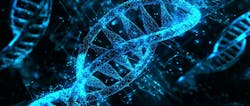GOAL Consortium formed to empower academic molecular testing laboratories
A total of 28 labs at academic medical centers have launched the Genomic Organization for Academic Laboratories (GOAL) Consortium, which was formed, in part, to pool the members’ collective buying power when purchasing reagents and other supplies for tumor sequencing panels.
Conducting cancer screening panels has started to become cost-prohibitive for academic pathology labs — in large part because the reagents necessary for the testing, and in particular the genetic probes, are becoming too expensive for smaller labs, according to the University of Chicago Medicine, one of the members of the consortium.
“We wanted to switch to a new manufacturer for our probes for our test but buying from the ideal vendor required placing a huge, expensive order for a vast surplus of probes. It would cost 10 times as much as our previous source, but it would be enough for many lifetime supplies,” said Jeremy Segal, MD, PhD, Associate Professor of Pathology at UChicago Medicine. “So, it didn’t make perfect sense for us by ourselves, but what about sharing it?”
The consortium has now launched as an independent non-profit organization to facilitate the collaborative relationship between the 28 academic laboratories that are now involved in the network.
In addition to launching their new probe panels in at least seven of the labs now included in the consortium (with many more labs actively working to deploy testing with these probes), the pathologists in the collaborating labs began to connect more directly, asking one another questions and sharing protocols.
Now, the consortium is working on a concordance study, collecting data from individual labs in the group to determine how the results from each team line up. Possible future efforts may include providing data sharing resources and multi-institutional studies in addition to expanding the support network of the consortium.
“There are many directions we can go, and we’re not sure exactly where we’ll take it, but there’s no shortage of work to do,” said Segal. “Responding to the latest science and translating it quickly into diagnostics to help treat our cancer patients is a constant, challenging process. But working together as a group makes everything easier.”





